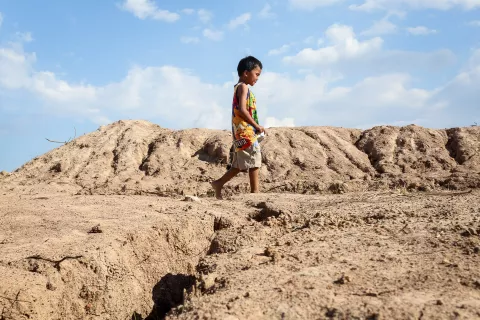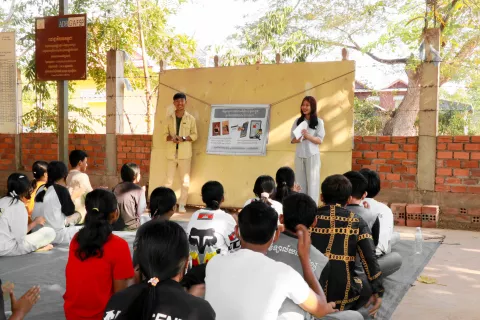Water, Sanitation and Hygiene, Climate and Environment Annual Results Report 2022
Progress, results achieved, and lessons learned from 2022

Highlights
The East Asia and the Pacific (EAP) region is particularly vulnerable to the impacts of climate change, with millions of children exposed to water scarcity, coastal flooding, cyclones, and air pollution, among others. These extreme weather events not only disrupt the availability of clean water for families but also affect water and sanitation services, thus increasing the risk of diseases and children’s normal development. The combined effects can also cause children to miss school, affecting learning outcomes and future potential. All of this stands to exacerbate inequality.
UNICEF is actively working to integrate climate resilience into their water, sanitation and hygiene (WASH) programs. In 2022, UNICEF’s efforts led to improved access to safe drinking water for over 487,000 people, and basic sanitation services -with climate resilience focus- for over 287,000 people. In addition, UNICEF created platforms for youth action and advocacy, encouraging governments to prioritize children's rights to a safe and healthy environment.
This report provides a summary of the progress, major WASH, climate and environment results achieved, as well as lessons learned in the East Asia and Pacific Region in 2022. Moreover, it provides a financial overview, along with a narrative on challenges and opportunities that the region faces. The report concludes with a brief analysis of the WASH, climate and environment programme in 2023 and how this aligns to the UNICEF Strategic Plan 2022–2025 in order to achieve national goals and the SDGs by 2030.






